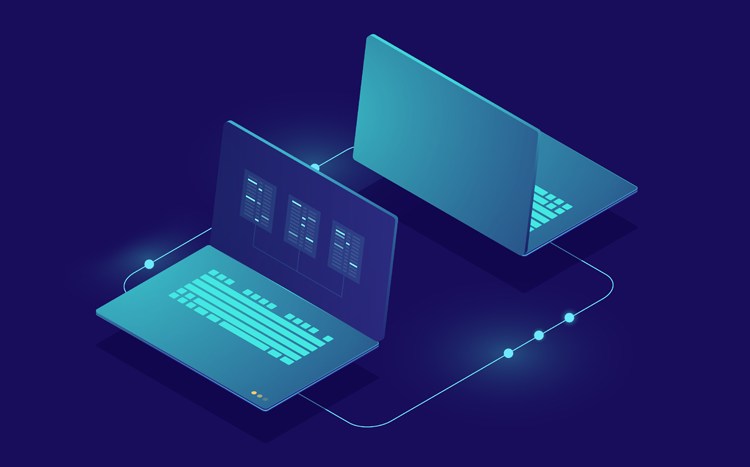Leveraging B2B and B2C – Digital Transformation


Ecommerce’s roots go back to the 1960s when business used the Electronic Data Interchange (EDI) to share business documents with other companies. It wasn’t until eBay started in the 1980s and Amazon’s start in the 1990s that ecommerce took off. Both companies kick-started B2C (Business to Consumer) ecommerce. Lagging behind B2C ecommerce is its sibling B2B (Business to Business). Although B2B got a later start, it has become a $1 trillion business and may outpace B2C in the near future. Foster Analytics predicts B2B ecommerce will reach $1.8 trillion and account for 17% of all B2B sales in the US by 2023. With this tremendous growth, manufacturers, regardless of vertical, are under increasing pressure to embrace ecommerce. Manufacturers are under pressure to define their online strategy as traditional modes of phone, email and fax ordering give way to ecommerce. Declining sales will force reluctant manufacturers to go online. The most successful companies will be the ones that can effectively use ecommerce to attract new business and retain/grow existing business with the latest features and benefits that drives increased sales while reducing costs.
The pressures manufacturers are feeling are not limited to your direct B2B competition. Amazon’s B2C ecommerce platform is also having a direct impact on manufacturers ecommerce strategy. The following are a few of the questions manufacturers should consider. Are they a direct competitor, selling your products or competitors’ products? If so, what is your strategy to be competitive? If your strategy is to sell through Amazon, can you maintain brand control? Does it matter? What features/functionality will you need to provide a comparable ecommerce user experience?
The last question is perhaps the most important. To reach the goals of attracting new business and retaining and growing existing business is increasing dependent on having the features driving B2C ecommerce. B2B customers are increasingly looking for sites that are easy to use and loaded with features that enrich their experience. They are looking for features like:
Wish List – ecommerce sites not using wish lists are losing potential sales. Wish lists enable your customers to tell you what they want and are likely to buy
Loyalty Campaigns – provide incentives for your frequent customers and rewards them for incremental business
Chat box – enables you to provide superior customer service and enhance the purchasing experience while helping to close the sale
Product rating – many customers want to know what others have said about a product before buying. Product ratings helps increase customers’ confidence in purchasing the product
Multiple product images and zoom – many customers appreciate the ability to view an item from multiple angles and see the item “close-up.” These views give them increased confidence in their purchase.
Multiple product images and zoom – many customers appreciate the ability to view an item from multiple angles and see the item “close-up.” These views give them increased confidence in their purchase.
Recurrent orders – makes it easier and more convenient to place orders for items customers want to automatically receive at a frequency of their choice
Flexible discounting – the ability to offer multiple different discounts to drive sales in different situations is a key to increasing sales. Discounting can include such discounts as: order volume, product volume, category, coupon, and one-time close outs.
Multiple platforms – to maximize sales, today’s ecommerce sites have to be accessible by mobile smart phones, tablets and computers. Fewer sales are placed from an office computer each day.
Chatbot – is a great way to provide the benefits of chat box with the cost savings of AI (artificial intelligence). Commonly asked questions can be addressed without the additional manpower expense
These features have added benefits for manufacturers – they help drive increased sales and may provide a competitive advantage.
However, manufacturers are looking for even more. Manufacturers are also looking to reduce their costs, better understand their business, and possibly to get a better return from their ERP investment. They are looking for capabilities like:
Top rated cloud hosting with a leader like AWS – with cloud-based hosting you can save the expense and headaches of purchasing and supporting expensive hardware. Amazon Web Services (AWS) is flexible, cost-effective, reliable, and secure.
Highly responsive 24x7x365 support – reduces the risk and cost of non-optimal performance should a problem occur.
Lower administration costs – can be achieved with tools such as:
- Easy to use WYSIWYG website editor for customization
- Administration without IT intervention
- Bulk uploads for images, products, SKUs, customers
Metrics are also gaining in importance. Manufacturers are looking to gain greater insight into their customers, their buying habits, and potential leads.
Dynamic pricing, with a pricing engine that can display real-time and accurate pricing, including a variety of discounts is driving manufacturers to favor platforms that have real-time integration with their existing ERP.
As the B2B ecommerce is imbued with more B2C capabilities, a new ecommerce model has emerged that fuses the two together into the B2B2C model. This model relies on a B2C feature rich B2B site with a strong ERP integration. It then extends these capabilities to the manufacturers’ downstream distribution network. With the B2B2C model a manufacturer can offer the feature rich ecommerce capabilities to their wholesalers, distributors, and agents. Manufacturers can host their downstream partners’ websites and provide them with benefits such as listed above. The partners can also customize their websites to reflect their unique business, including other product lines. Manufacturers also benefit by a closer relationship with their partners and an additional revenue stream as they charge for the site hosting.
The B2B2C model is available today. eComchain pioneered the model. Today eComchain’s customers are reaping the benefits with short deployment, inhouse ERP integration expertise, rapid ROI typically under 1 year, dramatically increased sales up to 100% in the first year, and significantly reduced costs. eComchain’s customers know these benefits and have consistently given eComchain 5-out-5 stars ratings at Gartner.


There are no comments yet.